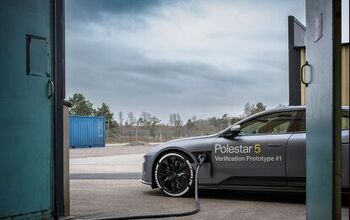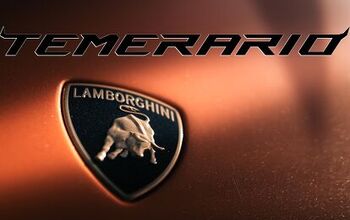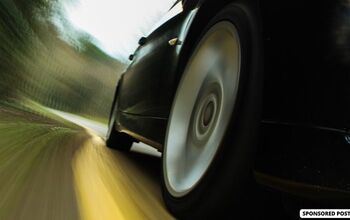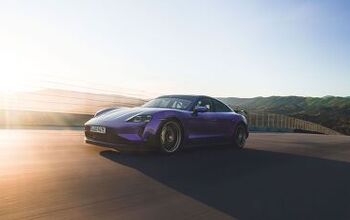2011 MazdaSpeed3 Review

When it comes to hot hatches, or even sporty compact cars, there isn’t much that can stand fender to fender with the MazdaSpeed3. Somewhat of a leftover from the Fast & Furious era, many pretenders have come and gone but the MS3 retains a strong following thanks to its ability to offer boat loads of power, exceptional handling, distinctive looks and an impressive interior. And being a smaller automaker with a penchant for motorsports and the aftermarket, Mazda recognized its success with a certain segment of the market and has decided an encore for the hottest hatch was in order.
Get the Flash Player to see this player.
FAST FACTS
| 1. The second-gen MazdaSpeed3 retains the first model’s 2.3L turbocharged 4-cylinder with 263-hp and 280 ft-lbs of torque. |
| 2. Mechanical upgrades include wider wheels and tires, new springs and shocks, larger sway bars, electronic brake assist, a longer geared transmission and a more advanced boost controller. |
| 3. Pricing starts at $23,340, plus an optional $1,895 Tech Package. |
With the launch of the second generation Mazda3, it wasn’t at first clear if a Speed model would be a part of that lineup, but Mazda delivered and the automaker’s progressive (some would say excessive) new style seems to work perfectly with the car’s boy-racer profile.
Many have criticized Mazda’s new look, but we’re fans. The rather outrageous standard design is complimented by the Speed’s new front bumper, and fenders, not to mention the large hood scoop, rear diffuser and spoiler. Besides, hot hatches are supposed to have big spoilers and wild bodykits, giving more than just a subtle hint at what the car is capable of.
UPGRADED SUSPENSION, WIDER TIRES AID GRIP
Adding to the overall look for 2010 is a new set of 18-inch wheels with a stunning new design. Importantly, they are also 7.5-inches, versus 7.0-inches on the previous model, making room for wider 225/40/18 Dunlop tires, which Mazda says have increased sidewall stiffness to further improve handling.
And that is just the first item in a long list of minor improvements that add up to make an all-new and even better handling and performing package. Other highlights include new springs rates, shocks and even thicker sway bars with pickup points set further out for maximum stability.
All those small changes might not be tangible on their own, but added up they do make a difference – the wider tires in particular. This front driver gets improved grip in the twisties, which is a good thing, because it’s also got more than enough power to spin the tires, LSD or not.
Sure the suspension is a bit stiff, but buyers of this car aren’t likely to mind. It’s actually not bad and any mild incivility is worth the tradeoff for how much fun the MS3 delivers.
Adding to the fun are adjustments to the steering and braking systems. For the steering Mazda claims improved responsiveness, and while we can’t say if that’s really the case over last year’s model, it is exceptional with the stiffly sprung chassis following behind the front wheels turn after turn. Just be careful of that throttle or the tires will easily break loose, creating plenty of front-drive understeer.
The brake pedal really does have an excellent level of responsiveness – more so than the throttle. It’s not too grabby up top but comes on strong enough and stays strong. The wider tires also aid in adding a little extra contact patch when slowing the car.
While the mechanical bits of the braking system are essentially the same, those intent on going to lapping days will appreciate Mazda’s new electronic brake assist, which can better differentiate between a panic stop on the street and the sort of very hard braking you might experience on the track.
TURBOCHARGED 4-CYLINDER DELIVERS TORQUE STEER LIKE A FRONT-DRIVE V8
But modifications to the chassis and brakes aren’t where the updates are limited too – there’s lots new under the hood as well. Engine output is actually the same as the outgoing model, but don’t let that fool you as lots has been done to improve the powerplant and the power delivery.
The new hood scoop for the top-mount intercooler keeps the turbo working at optimum levels even when things start to heat up. There’s also an upgraded boost controller designed to help make the power delivery much smoother than on the previous model.
The carry-over 2.3-liter turbocharged direct-injection DISI 4-cyliner already makes a tremendous amount of power considering its size, with 263-hp at 5500 rpm and 280 ft-lbs of torque at just 3000 rpm. That’s a lot of power at low rpm for a 4-cylinder, but it also comes with plenty of torque steer. Even at lower rpm in a middle gear, once you get close to the 3000 rpm mark you better have both hands on the wheel. We haven’t felt torque steer this bad since the V8-powered front-drive Pontiac GXP.
Head to the track or hit up your favorite canyon run and you can skip the forearm portion of your workout. It almost made us wish for a dual-clutch transmission setup with paddle shifters so we could keep both hands on the wheel… almost.
As a classic enthusiast-targeted machine the MS3 is offered exclusively with a six-speed manual transmission. Gears two through five are now longer than on the first-gen model. This should help improve fuel economy at the expense of performance, but with so much power it makes no tangible difference with a 0-60 mph time of 6.0 seconds. Regardless, drag racing isn’t the standard by which this car is measured.
Fuel economy, however, is actually worse, likely due to new, stricter EPA testing methods. The MS3 is now rated at 18/25 mpg (city/highway), compared to 20/28 mpg for last year’s model.
The shifter itself is quite good, but still not as silky smooth as in the Civic Si. Throttle responsiveness isn’t quite as immediate either – but a too-sensitive throttle isn’t always a great thing on a turbocharged car.
The exhaust note on the hot hatch is a perfect volume with enough sporty 4-cylinder pop to have some fun, but nowhere near being an obnoxious fart can.
PREMIUM COMPACT INTERIOR WITH SPORTY TOUCHES
Inside the MazdaSpeed3 gets the sort of boy-racer stylings the bodywork suggests, mixed with Mazda’s unusually premium-for-its-class interior. Our Velocity Red Mica test car featured black and red interior patterned material on the doors, with the same design (in plastic) running across the dash. The well-bolstered seats come with plenty of red stitching, as does the shift boot, with sporty aluminum pedals down below. The gauges themselves add to the more premium look of the interior and we particularly like the little boost gauge located right in the center.
One incredibly nice small trim item is the polished aluminum MazdaSpeed3 doorsills, which look like they cost a couple hundred bucks each.
Ergonomics aren’t as well thought out as the style of the cockpit, with the big center dial a somewhat strange choice and radio buttons that are very far apart. There are also at least a dozen too many buttons on the steering wheel – although they don’t seem to get in the way, which is surprising. The Nav system, a part of the $1,895 Tech Package is humorously small.
Also included is an advanced keyless entry system with push-button ignition, a six-CD changer with Bose 10-speaker audio system, six-months of free Sirius satellite radio and an alarm. As much as we like many of these toys, we’d really like to be able to order the keyless entry and push-button ignition as a separate package.
One other small gripe is that the rear seat legroom isn’t as plentiful as we’d like.
THE VERDICT
Every time you get behind the wheel of the MazdaSpeed3 it puts a smile on your face. It’s raw and fun, delivering excessive amounts of front-drive excitement for the street, and enough handling capability that in qualified hands it can do some serious damage on the track.
It’s not quite as dialed in as the Civic Si, nor is it as refined as the GTI. In fact, driving the MS3 just made us realize how little torque-steer the GTI has. Refinement, however, probably isn’t high on the list for those in search of a car like this. What is certain to be an important factor for potential buyers is the $23,340 price-point, which is actually slightly more than the GTI. But for that you get a lot more power.
But with neither the Honda nor the Volkswagen able to keep up with the MS3, Chevy’s Cobalt SS is a closer competitor; or might we suggest the Hyundai Genesis Coupe 2.0T or two vehicles more capable of handling similar amounts of thrust: the Subaru WRX or Mitsubishi Sportback Ralliart.
Sure it’s a functional front-drive hatchback, but the MazdaSpeed3 delivers horsepower and handling, not to mention great looks and an interior well above many of its competitors. With few reasonably priced performance vehicles on the road, the MazdaSpeed3 is, thankfully, a hard-core hot hatch that delivers.
RELATED READING
2010 Volkswagen GTI: First Drive
2009 Honda Civic Si
2009 Chevrolet Cobalt SS Review
2009 Subaru Impreza WRX Review
2010 Mitsubishi Lancer Ralliart Sportback: First Drive
2010 Hyundai Genesis Coupe 2.0T
2010 Volvo C30 R-Design Review
Audi A3 2.0T
2009 MINI Cooper JCW
LOVE IT
- Looks fast & furious and actually is
- Much-needed limited slip differential
- Actually well priced, not just for performance and practicality, but also interior trim quality
LEAVE IT
- Abundant torque steer
- Tech Package items can’t be ordered a la carte
- Excessive buttons on wheel and silly little Nav screen
- Fuel economy

With AutoGuide from its launch, Colum previously acted as Editor-in-Chief of Modified Luxury & Exotics magazine where he became a certifiable car snob driving supercars like the Koenigsegg CCX and racing down the autobahn in anything over 500 hp. He has won numerous automotive journalism awards including the Best Video Journalism Award in 2014 and 2015 from the Automotive Journalists Association of Canada (AJAC). Colum founded Geared Content Studios, VerticalScope's in-house branded content division and works to find ways to integrate brands organically into content.
More by Colum Wood























![2012 Honda Civic Si Review [video]](https://cdn-fastly.autoguide.com/media/2023/06/26/06105/2012-honda-civic-si-review-video.jpg?size=350x220)
![2011 MINI Cooper S Review [Video]](https://cdn-fastly.autoguide.com/media/2023/06/26/06091/2011-mini-cooper-s-review-video.jpg?size=350x220)












Comments
Join the conversation